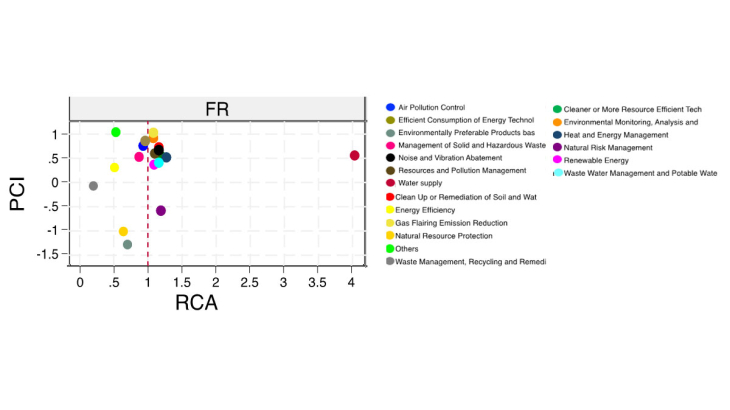France’s Green Horizon: Supply-Side Drivers for a Competitive Transition in Export Markets
Working Paper Series no. 990. France's green transition offers a unique lens into the interplay between decarbonisation strategies and industrial competitiveness within the context of a high-income economy. As a major European economy, France stands at a critical moment in balancing its reliance on nuclear power with the acceleration of renewable energy adoption and fostering green industrial innovation. This is relevant as the country faces increasing pressure to align with the EU’s 2050 carbon-neutrality goals while addressing domestic challenges, including fiscal constraints. This study employs a descriptive methodology based on a comparative analysis of indicators. By analysing indicators such as R&D spending, patenting trends, renewable energy costs, and green export shares, the paper assesses France’s green goods export competitiveness, industrial strengths, energy transition inputs, and transition risks relative to other G7 nations, China, and Spain. The findings reveal that while France benefits from strong nuclear infrastructure and high Green Complexity Potential, its share in global green exports has declined—from 4.7% in 2000 to 2.5% in 2022. Furthermore, lagging renewable energy deployment, limited fiscal support, and gaps in green innovation suggest that France risks falling behind some European counterparts, such as Germany or Italy, in achieving leadership in the green transition. However, opportunities exist in high-complexity sectors such as hydrogen, environmental monitoring, and carbon capture technologies, where France’s existing capabilities can drive competitiveness and export growth. Its participation in a single European green good export market is a key strategy to strengthen a competitive transition in France and Europe more widely.
